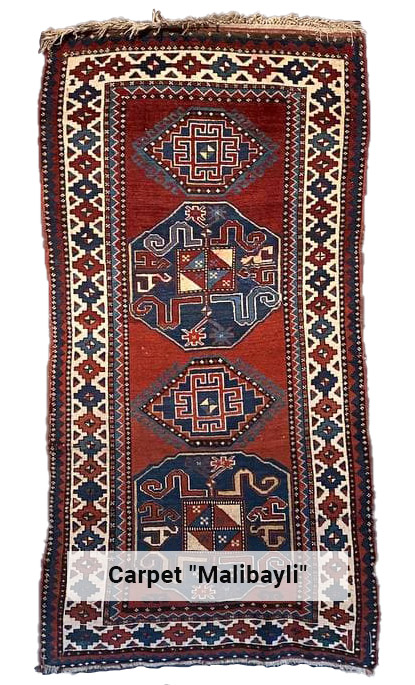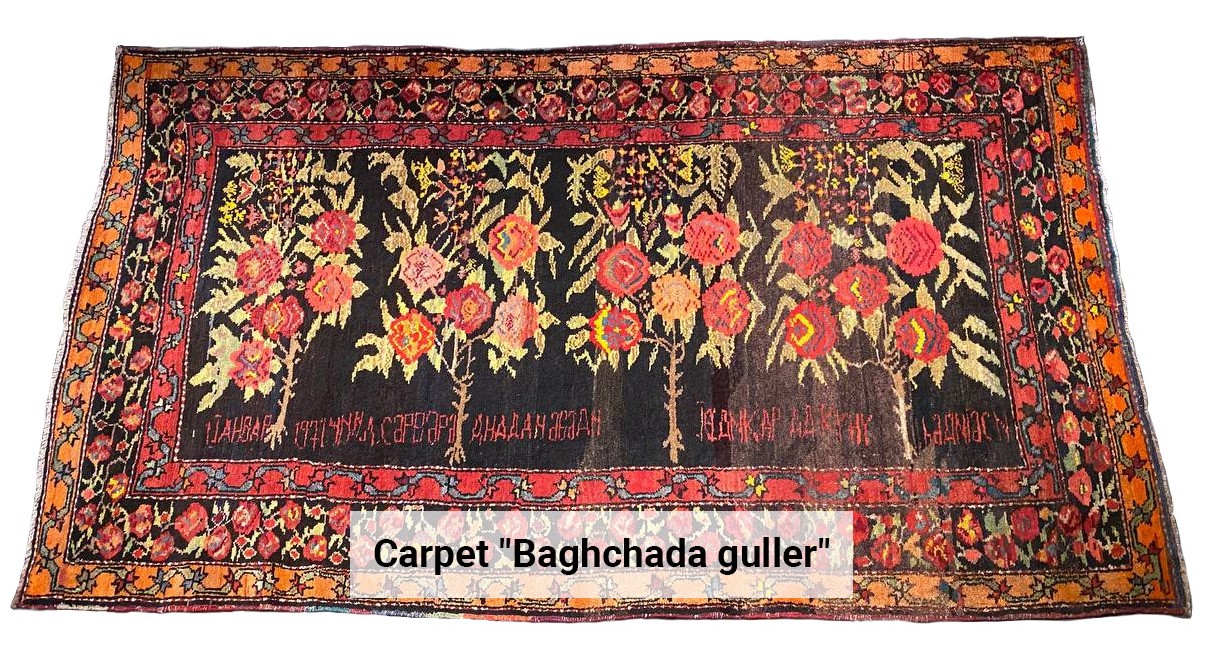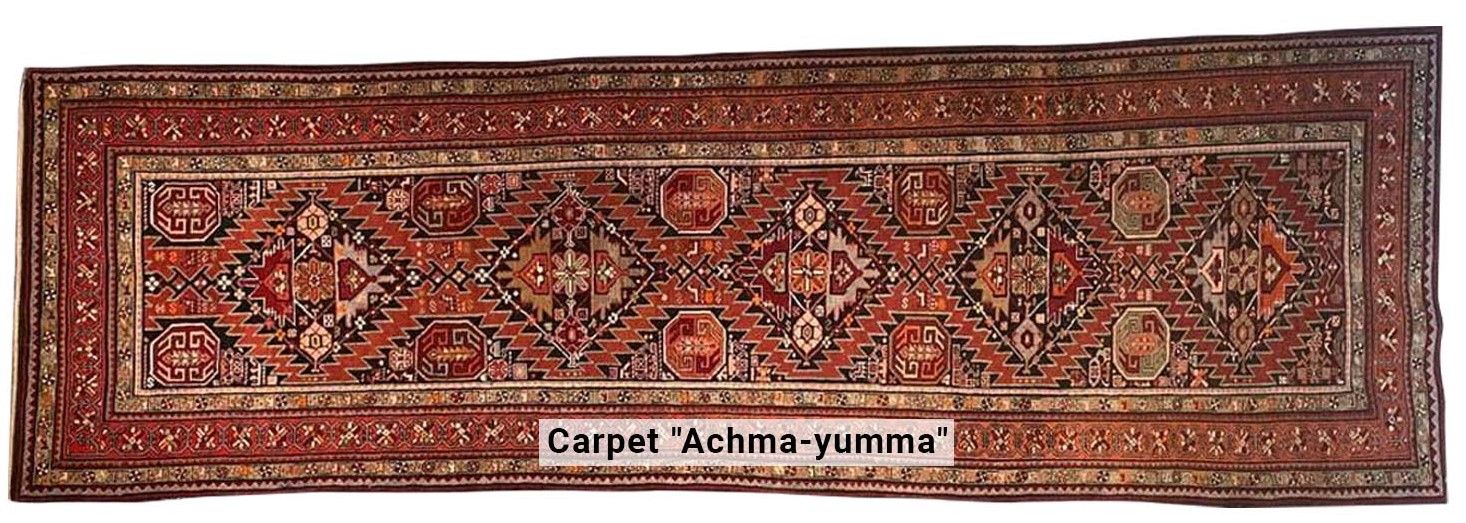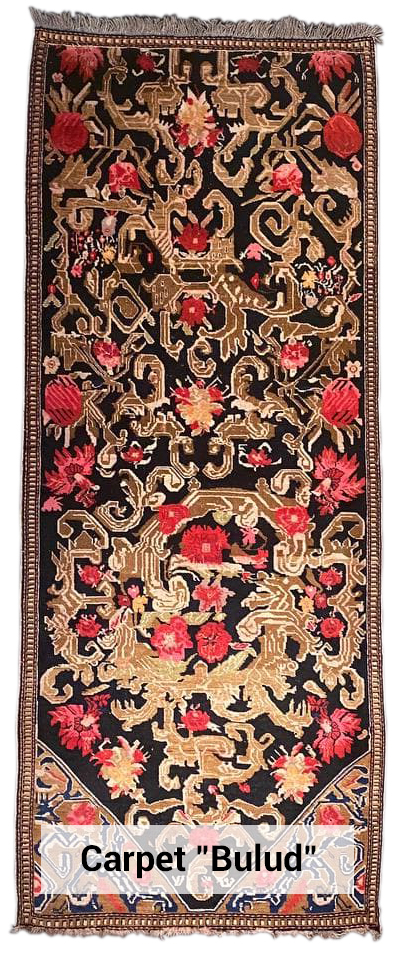Currently, some of the Karabakh carpets are kept in various museums of the world. A Karabakh silk carpet (zili) of the XVI-XVII centuries is kept in Berlin in the Museum of Arts. The 18th-century Shusha carpet is presently kept in the Museum of Fine Arts in Boston. In the American Textile History Museum you can find a carpet, which is called “Afshan”, woven in Shusha in the XVIII century. The Metropolitan Museum of Art in New York possesses the Karabakh carpet of the “Verni” group. The Azerbaijan National Carpet Museum in Baku has a unique collection of carpets from Shusha and Karabakh. Most of the collection was originally kept in the Shusha Carpet Museum. In 1992, prior to the occupation of the city by the Armenian military forces, 600 carpets were transported from the city by the director of the Shusha Museum. Qarabag.com has prepared a material on the history of carpet weaving development in Karabakh.

Carpet weaving is one of the ancient and traditional practices of the Azerbaijani people and has been historically developed on the territory of the former Karabakh Khanate.
In the late 19th century and early 20th century Karabakh carpets were exported to various Western European countries, mainly to England. These carpets were also sold in Tabriz and Istanbul.[Transcaucasia. Soviet republics: Azerbaijan, Armenia, Georgia, Abkhazia, Adjaristan, South Ossetia, Nag. Karabakh, Nakhichevan. Statistical and economic collection. Publication of the Supreme Economic Council Of T. S. F. S. R., 1925, page 378].
[Karimov L. G. Azerbaijan carpet. Volume II, Baku, Ganjlik, 1983, page 48].
The region of Karabakh carpet weaving was located within Shusha, Jabrayil and Zangezur districts (the present Lowland and Nagorno (Mountainous)- Karabakh). This is due to the proximity of Karabakh to the Persian borders. The character and style of many drawings, the method of weaving and the height of the pile of the Karabakh carpets were similar to the Persian ones, but the Karabakh carpets, unlike the Persian ones, were woven from wool rather than paper.
[Caucasian calendar for 1901, Tiflis, 1900, p. 63; 64].
By the end of XIX, the Karabakh carpet-making region produced the largest carpets by size. In technical terms, the Karabakh carpets were of high quality, but the artistic merit of the drawings remained far behind due to the use of fading aniline paints common in this region after the 70s of the XIX century.
The city of Shusha was the center of Karabakh carpet production and distribution. Shusha was considered to be the place of the best carpet weaving masters with a great artistic taste who were more familiar with the requirements of foreign markets than the artisans of other regions.
[Transcaucasia. Soviet republics: Azerbaijan, Armenia, Georgia, Abkhazia, Adjaristan, South Ossetia, Nag. Karabakh, Nakhichevan. Statistical and economic collection. Publication of the Supreme Economic Council Of T. S. F. S. R., 1925, page 378].
[Karimov L. G. Azerbaijan carpet. Volume II, Baku, Ganjlik, 1983, p. 48].
In 1872, at the Technical Exhibition in Moscow, on the basis of expert reports and the conclusions of the Council of theThe Imperial Society of Devotees of Natural Science at Moscow University, the following representatives of the Karabakh region won prizes for good carpets:
- Fatma-aga Sharif-qizi – the city of Shusha
- Ahmad Dashdamir oghlu – Gadrud village, the Shusha district
[The newspaper Kavkaz, issue No. 145, 10 (22) .12.1872, page 3].
The middle hemband known in Karabakh as “islimielyan” is often found on Azerbaijani carpets. It was widely used by the carpet weavers of Shusha in the second half of the XIX century. It was called “chainikelyan” or “chainiknishyan” (teapot-shaped hemband).
[Karimov L. G. Azerbaijan carpet. Volume II, Baku, Ganjlik, 1983, p. 130].
In 1885, Shusha became one of the main centres of carpet production in the South Caucasus.
[Caucasian calendar for 1887, published by order of the Commander-in-Chief of the Civil Unit in the Caucasus, at the Caucasian Statistical Committee. Tiflis, 1886. Section I, p. 201].

New carpet compositions have appeared in Shusha – “Bakhchada gullar” (Flowers in the garden), “Sakhsida gullar” (Flowers in tin-glazed pottery), “Bulut” (Clouds), “Atly-itly” (Horseman with a dog).
[Kerimov L. G. Azerbaijan carpet. Volume II, Baku, Ganjlik, 1983, P. 48].
In the Karabakh region, mainly in Shusha district, the felted products “kecha” and “namyat” were made. They were distinguished by original, superior designs and they easily replaced carpets. But by the end of the first quarter of the XX century, the production of these items began to lose importance.
[Transcaucasia. Soviet republics: Azerbaijan, Armenia, Georgia, Abkhazia, Adjaristan, South Ossetia, Nag. Karabakh, Nakhichevan. Statistical and economic collection. Publication of the Supreme Economic Council Of T. S. F. S. R., 1925, page 378].

The carpet industry in Karabakh was more developed than in other parts of Transcaucasia, both in terms of the volume of production and the number of varieties.
In 1900, in the Shusha district, the following types of carpets were distinguished by their patterns:
1) lyampa – a mono color backdrop with a small figure in the middle

2) table
3) maschin -with mixed European patterns
4) balykh (fish) – with fish-shaped patterns
5) buta-with almond-shaped patterns
6) guli yaylik – red scarf
7) podnos (tray) – with tray-shaped patterns
8) yashma-yumma
9) bulut (cloud)- with cloud-shaped backdrop
10) mundzhukh (beads)
11) zarmahmar (golden velvet)
In terms of size, shape and purpose, these carpets were divided into:
- khali – a large carpet that was spread in the middle of the room
- verni – a large khali woven in one and a half knots. The main pattern of these khali is usually a large stylized image of a dragon, reminiscent of the Latin letter “S”
- GYARTAFA – oblong Karabakh carpets that were sent to Istanbul via trade routes. GYARTAFA means “Karabakh gift”
- yang- narrow, long and paired carpets that were spread along the edges of the khali
- guba (gaba) – it was average by size (between khali and yan)
- takht-ustu – used for ottomans and walls
- khali balasi
8) jeynamaz – prayer mats
[Caucasian calendar for 1901. Tiflis, 1900, pp.63; 64].
[Kerimov L. G. Azerbaijan carpet. Volume II, Baku, Ganjlik, 1983, pp. 59;60].




